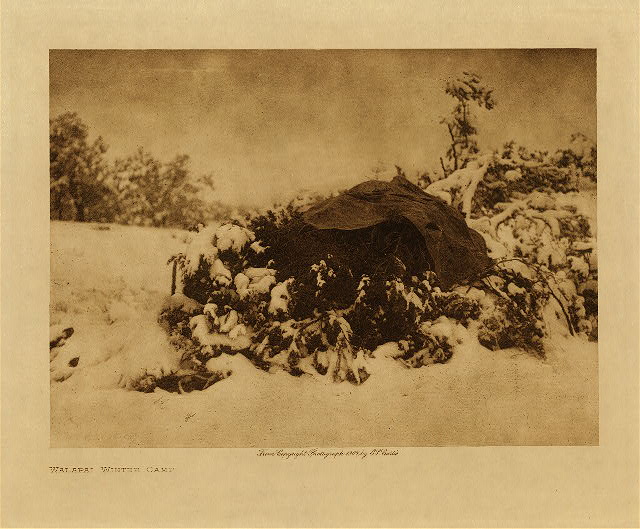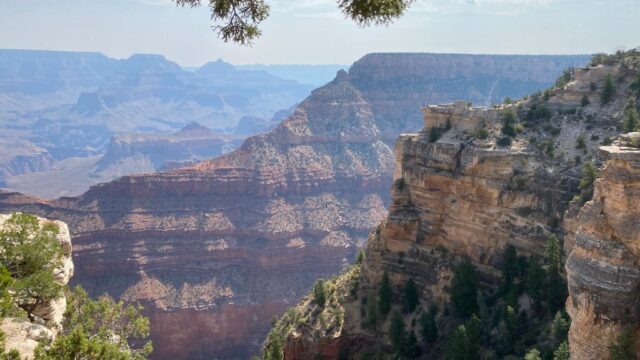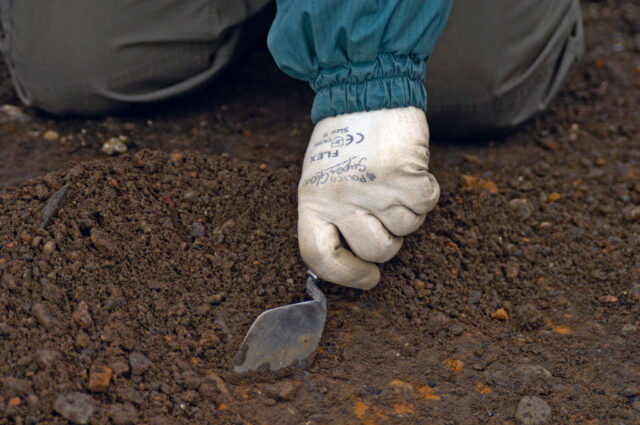Those visiting the southwestern United States will almost always make a stop at the Grand Canyon. Its miles of rock formations are not only picturesque, they’re also the ideal place for those looking to test their rock climbing and hiking skills. Beneath this vast rocky expanse are the Grand Canyon Caverns, which offer a completely different experience than the cliffs above. Read on to learn more.
Grand Canyon

The Grand Canyon is one of the most breathtaking sites in the US. Spanning 277 miles, the Arizona-based natural wonder has been home to several Native American settlements, with the Pueblo people viewing it as a holy site.
Largely preserved due to the efforts of US President Theodore “Teddy” Roosevelt, the Grand Canyon plays host to approximately 5.9 million visitors each year, making it the second-most popular national park in the country, after the Great Smoky Mountains in Tennessee and North Carolina.
Grand Canyon Caverns

Running 210 feet beneath the surface, the Grand Canyon Caverns are a 2,406-foot-long maze of caves and crevices. A few miles from Peach Springs, Arizona, they’re among the driest caverns in the US, meaning it’s rare for stalactites and stalagmites to form, as they need ample amounts of water.
A wicked winter storm

During the winter of 1917-18, members of the Hualapai tribe in Peach Springs ventured out to collect firewood. What should have been a routine trip to the hilltops over the Grand Canyon Caverns took a turn when a severe snowstorm blew through the region, trapping them for three days.
An illness leads to a predicament

While the tribesmen were trapped, two were struck by the flu and perished. Not wanting to potentially spread the illness to other members, the group decided to bury them near where they’d hunkered down, as opposed to back at the settlement. However, the snow and cold temperatures meant the ground was frozen, preventing them from digging into it.
A final resting place

Remembering a large, partially-concealed hole they’d come across, the tribesmen buried the two decedents in the 50-foot trench. What they didn’t realize was that they were at the entrance of the Grand Canyon Caverns. A boulder, falling thousands of years prior, had sealed it off.
Walter Peck stumbles across a life-changing discovery

A decade later, in 1927, a man named Walter Peck was walking overtop the Grand Canyon Caverns, on his way to meet friends for a poker game. Along the way, he almost fell into a “funnel-shaped” hole. While this would be jarring for the average person, Peck knew he wanted to rappel down the gap and do some exploring.
Descending down the hole

The following day, Peck recruited his friends to help him explore the hole. After acquiring a rather large rope, he rappeled 150 feet down, a daring feat for even the best rock climber. All he had was a coal lantern, which he planned on using to light his way once at the bottom.
Stumbling across human remains

Once Peck had made it to the bottom, he began to explore the large caverns that lay before him. Among the first things he saw were two pairs of skeletal remains and a horse saddle. Local newspapers incorrectly reported that the former were prehistoric cavemen, prompting scientists to collect the bodies from the Grand Canyon Caverns.
It took some time to deduce that the skeletal remains were actually those of the Hualapai tribesmen who’d died decades prior.
An unexpected discovery leads Walter Peck to purchase land

Using his coal lantern, Peck journeyed deeper into the Grand Canyon Caverns. Raising the light up to the walls, he noticed a glimmer that appeared to be gold. Believing he’d located a large cache of the precious metal, he purchased the surrounding 800 acres of land.
Not all that glimmers is gold

Unfortunately for Peck, his purchase didn’t turn into a booming mining project. It turned out that the shiny substance he’d observed wasn’t gold – it was actually iron oxide, better known as rust. Just as quickly as they’d appeared, his hopes for riches were dashed.
Turning a bust into an opportunity

Instead of letting his back luck get him down, Peck channeled his entrepreneurial spirit to turn his purchase into a winner. After constructing a primitive elevator, he opened the Grand Canyon Caverns to the public, charging visitors $0.25 each to rappel down and explore the caves.
Additional opportunities arise during the Great Depression

When the Great Depression began in 1929, the majority of Americans struggled to get by – but not Peck. In 1935 (some sources say 1939), he struck a deal with the Civilian Conservation Corps (CCC). If he furnished the materials, they’d build a new entrance into the Grand Canyon Caverns.
Once this was complete, Peck upped the amount he charged visitors to $0.50.
Blasting a new entrance into the Grand Canyon Caverns

In 1962, a brand new entrance was blasted into the Grand Canyon Caverns. To ensure visitors could safely access it, an additional elevator was installed. The original entrance was eventually sealed off at the request of the Hualapai people, who consider it a sacred burial place.
An ancient creature is discovered

The construction work that occurred in 1962 also revealed an unexpected discovery: the skeletal remains of a prehistoric creature. Anthropologists later determined the bones were those of a Paramylodon, a large ground sloth that roamed the Earth between 4.9 million and 20,000 years ago.
Stashing supplies during the Cuban Missile Crisis

During the Cuban Missile Crisis, the US government, under the leadership of President John F. Kennedy, converted part of the Grand Canyon Caverns into a fallout shelter. Officials stashed enough food and water to support 2,000 people, should the need arise.
These supplies remain in the caverns to this day.
Expansion of amenities

While Peck has since passed, the Grand Canyon Caverns and the surrounding land remain privately owned. Over the decades, the area has been built up to better host the number of tourists who visit each year. Among the amenities are an RV park, a hotel, an aircraft runway, campgrounds, a restaurant and a variety store.
New caves continue to be discovered

Considering how vast the Grand Canyon is, it’s not surprising that new caves continue to be discovered. With 60 miles of limestone, the caverns aren’t an easy place to explore. To make things easier for visitors, benches and handrails have been installed throughout.
‘Deepest, darkest hotel room in the world’

Among the most interesting attractions at the Grand Canyon Caverns is what’s been described as the “deepest, darkest hotel room in the world.” The Caverns Suite is located atop a wooden platform in the middle of the largest room and features vaulted ceilings, two queen beds, a coffee maker, a suite attendant and meal delivery service.
On top of this, once all tourists leave in the evening, those who’ve booked the room have the whole caverns to themselves and are allowed to explore, so long as they stay on the concrete path.
Looking to visit the Grand Canyon Caverns?

There are currently four tours available for those looking to explore the Grand Canyon Caverns. Ranging from $24.99 to $125.00 per adult, they each offer a different experience. Those looking for a paranormal adventure can hunt for spirits on the Ghost Walk Tour, while visitors looking to learn about the site’s history can do so through the Caverns Guided Tour.
Anyone who’s up for a challenge should definitely sign up for either the Wild or Explorer tours.
More from us: The US Government Offered Free Room and Board In This Town – Why Won’t Anyone Live There?
The Grand Canyon Caverns is open to the public seven days a week, from 9:00 AM to 5:00 PM. To reach the natural wonder, drive down the historic Route 66 – you can’t miss it!
